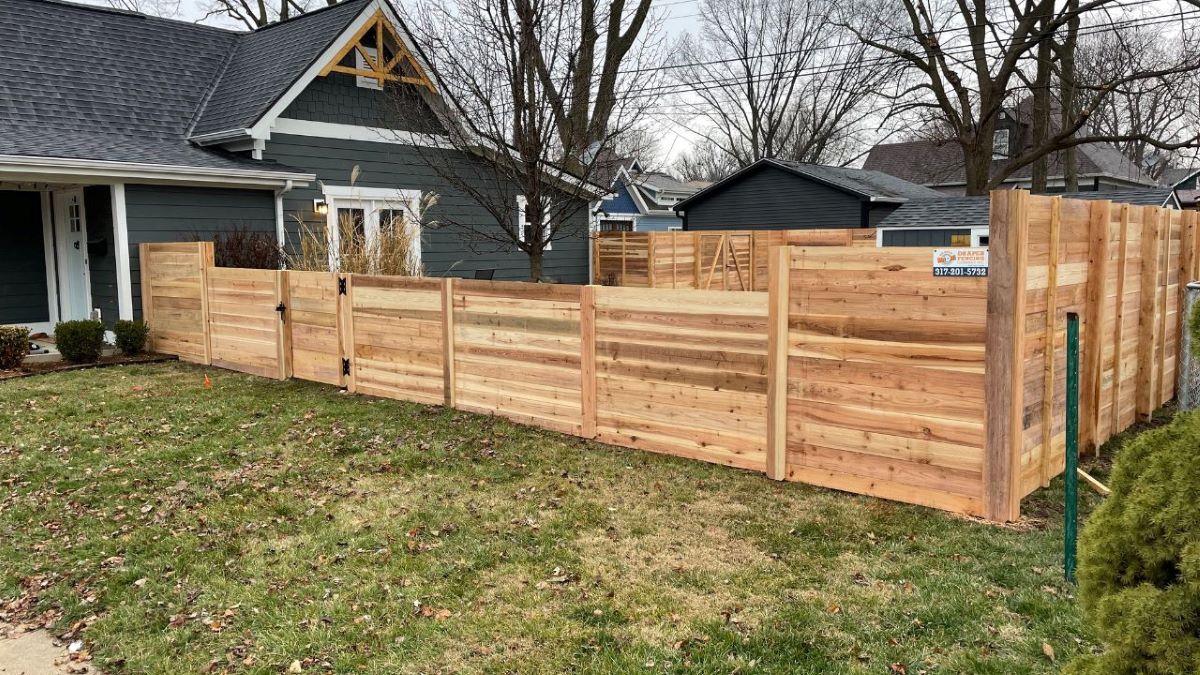

Articles
How Long Will Cedar Fence Last
Modified: August 27, 2024
Discover the lifespan of cedar fences and how long they will last. Read our informative articles on this topic to make an informed decision for your fencing needs.
(Many of the links in this article redirect to a specific reviewed product. Your purchase of these products through affiliate links helps to generate commission for Storables.com, at no extra cost. Learn more)
Introduction
A cedar fence can be a beautiful and functional addition to any property. Not only does it provide privacy and security, but it also adds a touch of natural elegance to the surroundings. However, like any outdoor structure, a cedar fence is exposed to the elements and will inevitably deteriorate over time.
One of the common questions that homeowners have is, “How long will my cedar fence last?” The lifespan of a cedar fence largely depends on several factors such as climate, the quality of the wood, and regular maintenance. Understanding these factors can help you make informed decisions about your fence and ensure that it lasts for many years to come.
Key Takeaways:
- Protect your cedar fence from climate and weather conditions, such as moisture, sunlight, and temperature fluctuations, to extend its lifespan and maintain its natural beauty and strength.
- Choose high-quality cedar wood, practice regular maintenance, and promptly address signs of deterioration to ensure your cedar fence remains sturdy, visually appealing, and functional for many years.
Read more: How Long Will A Cedar Pergola Last?
Factors Affecting Cedar Fence Longevity
Several factors can influence the longevity of a cedar fence, including climate and weather conditions, the quality of the cedar wood used, and the level of maintenance and care it receives.
Climate and Weather Conditions
The climate and weather conditions in your area play a significant role in the lifespan of your cedar fence. Cedar wood is naturally resistant to decay and insect infestation, making it an ideal choice for outdoor structures. However, extreme weather conditions can accelerate the deterioration process. Wet and humid climates can promote the growth of mildew and mold on the surface of the fence, while dry and arid climates can cause the wood to shrink and crack. Additionally, exposure to harsh sunlight can fade the color of the wood over time.
Quality of Cedar Wood
The quality of the cedar wood used for your fence is another crucial factor that affects its longevity. Not all cedar wood is equal in terms of durability and resistance to decay. When selecting cedar for your fence, opt for higher-grade lumber, such as clear or select grade, which has fewer knots and is less prone to warping and splitting. Lower-grade cedar may have more imperfections and can deteriorate more rapidly.
Fence Maintenance and Care
Regular maintenance and care are essential for extending the lifespan of a cedar fence. Proper care includes routine cleaning to remove dirt, debris, and organic matter that can trap moisture against the wood. Using a soft brush or low-pressure washer, gently scrub the fence with a mild detergent and rinse thoroughly with water. Additionally, applying a protective sealant or stain can help to repel water and protect the wood from UV damage. It’s important to reapply the sealant or stain every few years to maintain its effectiveness.
Inspect your fence periodically for any signs of damage or deterioration, such as loose or broken boards, and promptly address any issues to prevent further damage. Regular maintenance also includes trimming vegetation around the fence to allow for proper airflow and prevent moisture accumulation.
By considering these factors and taking appropriate measures to protect and maintain your cedar fence, you can significantly prolong its lifespan and enjoy its beauty and functionality for many years to come.
Read more: How Long Does Cedar Shake Roof Last
Climate and Weather Conditions
When it comes to the longevity of your cedar fence, the climate and weather conditions in your area play a significant role. Cedar wood is naturally resistant to decay, making it an excellent choice for outdoor structures. However, extreme weather conditions can still take a toll on its durability.
In regions with wet and humid climates, such as coastal areas, the excess moisture in the air can create a conducive environment for the growth of mold, mildew, and fungi. These organisms can compromise the integrity of the wood and lead to rotting. Regularly inspecting your fence and promptly addressing any signs of mold or mildew growth can help prevent further damage and extend its lifespan.
On the other hand, dry and arid climates can cause the cedar wood to lose moisture and shrink. This can lead to cracks and splits in the wood, making it more susceptible to further damage from moisture, pests, and decay. Applying a sealer or stain to your cedar fence can help retain moisture and protect it from the effects of dry weather.
Another climate-related factor to consider is the intensity of sunlight. Prolonged exposure to direct sunlight can cause the wood to fade and lose its natural color over time. UV rays can also break down the lignin in wood, leading to structural weakness. Applying a UV-protective finish or choosing a cedar species with natural UV resistance can help mitigate sun damage.
Furthermore, extreme temperature fluctuations can affect the expansion and contraction of the wood, which can weaken its structure. This is particularly relevant in areas with harsh winters or hot summers. Regular maintenance, such as sealing or staining the fence, can help minimize the impact of temperature changes on the wood.
It’s essential to consider the specific climate and weather conditions in your area when planning and maintaining your cedar fence. By taking appropriate measures to protect it from excessive moisture, harsh sunlight, and extreme temperature fluctuations, you can enhance its longevity and ensure that it remains a durable and appealing addition to your property.
Quality of Cedar Wood
When it comes to the longevity of your cedar fence, the quality of the cedar wood used is a critical factor to consider. Not all cedar wood is created equal, and selecting high-quality lumber can significantly impact the lifespan of your fence.
One important aspect to consider is the grade of the cedar wood. Cedar wood is classified into different grades based on its quality and appearance. Clear or select grade cedar is the highest quality and contains fewer knots and imperfections. These grades are more durable and less prone to warping, splitting, and decay.
On the other hand, lower-grade cedar, such as common grade, may have more knots, natural defects, and inconsistencies. While lower-grade cedar may be more cost-effective, it can deteriorate more rapidly and require more frequent repairs or replacements.
In addition to the grade, the source of the cedar wood is also essential. Cedar that is sustainably harvested from well-managed forests tends to be of higher quality. The age and growth conditions of the cedar tree can also influence the durability and resistance to decay. Ideally, you should choose cedar wood that comes from older trees with slow growth, as this tends to have denser and more durable wood.
It’s worth noting that cedar wood naturally contains oils and tannins that give it its natural resistance to rot, decay, and insect infestation. However, the concentration of these natural preservatives can vary among different species and individual cedar trees. For optimal longevity, consider selecting cedar species known for their exceptional durability, such as Western Red Cedar.
Lastly, the way in which the cedar wood is processed and treated can impact its quality and longevity. Kiln-dried cedar is a popular option as it helps reduce moisture content in the wood, making it less likely to warp or crack. Properly treated cedar with preservatives can also enhance its resistance to decay, insect damage, and weathering.
By choosing high-quality cedar wood with the appropriate grade, source, and treatment, you can ensure that your fence withstands the test of time and continues to showcase the natural beauty and strength of cedar.
Fence Maintenance and Care
To maximize the lifespan of your cedar fence, regular maintenance and proper care are crucial. Taking proactive measures to protect and preserve the wood will ensure that your fence remains strong and beautiful for years to come.
Cleaning
Regular cleaning is necessary to remove dirt, grime, and debris that can accumulate on the surface of your cedar fence. Use a soft brush or low-pressure washer to gently scrub the fence with a mild detergent diluted in water. Rinse thoroughly with clean water to remove any residue. Avoid using abrasive cleaners or harsh chemicals as they can damage the wood.
Read more: How Long Should A Wooden Fence Last
Sealing or Staining
Applying a protective sealant or stain to your cedar fence can help shield the wood from moisture, UV rays, and other environmental factors. Before sealing or staining, ensure that the wood is clean and dry. Follow the manufacturer’s instructions for the specific product you are using and apply it evenly using a brush or roller. Periodically check the condition of the sealant or stain and reapply as needed. This will help maintain the natural beauty and durability of the cedar.
Trimming Vegetation
Vegetation, such as vines, bushes, or trees, that come into contact with your cedar fence can trap moisture against the wood and promote decay. Regularly trim and clear any vegetation around your fence to allow for proper airflow and prevent moisture accumulation. This will help minimize the risk of rot and prolong the lifespan of your fence.
Addressing Damage Promptly
Inspect your cedar fence regularly for any signs of damage or deterioration, such as loose or broken boards, cracks, or insect infestations. Addressing these issues promptly can prevent further damage and ensure the structural integrity of your fence. Replace any damaged boards or components and consider treating the affected areas to prevent future issues.
Seasonal Inspections
Perform seasonal inspections of your cedar fence to identify any potential problems. These inspections can help you catch early signs of damage and address them before they worsen. Look for signs of warping, cracking, discoloration, or insect activity. By detecting and resolving issues early on, you can prolong the lifespan of your fence.
Remember, regular maintenance and care are essential in preserving the longevity and appearance of your cedar fence. By following these practices, you can enjoy a sturdy and visually appealing fence for many years to come.
Read more: How To Seal Cedar Fence
Common Causes of Cedar Fence Deterioration
While cedar wood is naturally durable, several factors can contribute to the deterioration of a cedar fence over time. Understanding these common causes can help you identify and address issues before they become severe.
Moisture and Water Damage
Excessive moisture is one of the main culprits behind cedar fence deterioration. When wood is constantly exposed to moisture, it can lead to rot, mold, mildew, and decay. Rain, sprinklers, and even high humidity levels can all contribute to moisture damage. It is crucial to ensure proper drainage and keep the fence dry to prevent these issues.
Insect Infestation
Insects, such as termites and carpenter ants, can also pose a threat to the integrity of your cedar fence. These pests can burrow into the wood, causing structural damage and weakening the fence over time. Regular inspections and timely treatment can help prevent and manage insect infestations.
UV Rays and Sun Damage
The sun’s ultraviolet (UV) rays can break down the lignin in cedar wood, leading to discoloration, fading, and structural weakness. Prolonged exposure to direct sunlight without proper protection, such as a UV-resistant sealant or stain, can deteriorate the wood and compromise the fence’s lifespan.
Read more: How Long Does Chain Link Fence Last
Extreme Temperature Fluctuations
Drastic temperature changes, particularly freezing and thawing cycles, can cause cedar wood to expand and contract. This constant movement can result in cracks, warping, and splitting. Taking measures to protect your fence from extreme temperature fluctuations, such as applying a protective finish, can help minimize these effects.
Lack of Maintenance
A lack of regular maintenance and care can significantly contribute to the deterioration of a cedar fence. Failure to clean, seal, and repair your fence can leave it vulnerable to moisture, pests, and other damaging elements. Routine maintenance tasks, such as cleaning, sealing, and addressing any issues promptly, are essential for prolonging the lifespan of your cedar fence.
By understanding these common causes of cedar fence deterioration, you can take proactive steps to prevent or mitigate damage. Regular inspections, proper maintenance, and timely repairs will help ensure that your cedar fence remains strong and visually appealing for many years to come.
Signs of a Deteriorating Fence
Recognizing the signs of a deteriorating cedar fence is crucial for addressing issues before they worsen and potentially lead to costly repairs or replacements. Here are some common signs to look out for:
Rot and Decay
Rot and decay are visible signs that your cedar fence is deteriorating. Check for soft or spongy spots on the wood, as well as discoloration or black spots. If you notice these signs, it usually indicates that moisture has penetrated the wood, leading to fungal growth and degradation of the fibers. Addressing rot and decay promptly is crucial to prevent further damage.
Read more: How Long Do Invisible Fence Batteries Last
Cracked or Split Wood
Cedar wood can develop cracks and splits over time as a result of excessive moisture, temperature fluctuations, or age. Inspect the boards and posts of your fence for any visible signs of cracks or splits. These can weaken the structure and allow moisture to penetrate, leading to further deterioration.
Warping and Bowing
Warped or bowed boards are indicative of moisture-related issues. Over time, exposure to moisture can cause the wood to warp or bow, leading to an uneven and unstable fence. If you notice any significant warping or bowing, it may be necessary to replace the affected boards to maintain the integrity of the fence.
Insect Activity
Wood-boring insects, such as termites or carpenter ants, can cause substantial damage to a cedar fence. Look for signs of insect activity, such as small holes, sawdust-like particles (frass), or tunnels in the wood. If you suspect an insect infestation, it is crucial to address the issue promptly to prevent further damage to your fence.
Fading and Discoloration
Exposure to UV rays from the sun can cause the natural color of cedar wood to fade over time. If you notice that your fence has become dull, gray, or has uneven coloration, it may be a sign that it requires maintenance, such as reapplying a protective sealant or stain to restore its appearance and protect it from further sun damage.
Read more: When To Stain A New Cedar Fence
Loose or Missing Boards
Inspect your cedar fence for loose or missing boards, as they can compromise the stability and security of the structure. Loose boards can be caused by rot, weakened fasteners, or strong winds. Replacement or repair of loose or missing boards is essential to maintain the functionality and appearance of your fence.
Regularly inspecting your cedar fence for these signs of deterioration allows you to take appropriate measures to address issues early on. Timely repairs and maintenance can help extend the lifespan of your fence and ensure that it remains in optimal condition for years to come.
Extending the Lifespan of a Cedar Fence
A cedar fence can add beauty and functionality to your property, and with proper care, you can extend its lifespan. Here are some essential tips to help you maximize the longevity of your cedar fence:
Regular Cleaning
Regularly clean your cedar fence to remove dirt, debris, and organic matter that can trap moisture against the wood. Use a soft brush or low-pressure washer to gently scrub the fence with a mild detergent diluted in water. Rinse thoroughly with clean water and allow the wood to dry completely before applying any sealant or stain.
Apply Protective Sealant or Stain
Applying a protective sealant or stain to your cedar fence can help repel water, protect against UV rays, and enhance the wood’s natural resistance to decay and insects. Choose a high-quality sealant or stain specifically formulated for exterior wood. Follow the manufacturer’s instructions for application and reapply as recommended to maintain optimal protection.
Read more: How Much Does A 6 Ft Cedar Fence Cost
Trim Vegetation
Trimming vegetation around your cedar fence is crucial to prevent moisture accumulation. Overgrown plants can hinder proper airflow and trap moisture against the wood, leading to decay and rot. Regularly trim vegetation and maintain a clear space around your fence to allow for proper ventilation and reduce the risk of moisture-related damage.
Address Damage Promptly
Inspect your cedar fence regularly for any signs of damage, such as loose or broken boards, cracks, or insect activity. Address these issues promptly to prevent further deterioration. Replace damaged boards, reinforce weak spots, and treat any signs of insect infestation. Timely repairs will help maintain the integrity and strength of your fence.
Protect from Direct Sunlight
UV rays from the sun can cause the cedar wood to fade and lose its natural color over time. To protect your fence from sun damage, apply a UV-resistant sealant or choose a cedar species known for its natural resistance to UV rays. Providing shade through strategic placement of trees or installing a pergola can also offer additional protection.
Maintain Proper Drainage
Ensure that your fence has proper drainage to prevent water from pooling around the base. Adequate drainage prevents moisture from seeping into the wood and promotes drying, reducing the risk of rot and decay. Grade the ground away from your fence or consider adding underground drainage systems if necessary.
Read more: What Type Of Fence Lasts The Longest
Perform Regular Inspections
Regularly inspect your cedar fence for any signs of deterioration, such as rot, cracks, or loose boards. Seasonal inspections will allow you to identify and address potential issues before they worsen. Look for signs of damage after strong storms or severe weather events and make any necessary repairs promptly.
By following these maintenance tips and providing proper care for your cedar fence, you can significantly extend its lifespan. With regular upkeep and proactive measures, your cedar fence will continue to enhance the beauty and functionality of your property for many years to come.
Conclusion
A cedar fence is a beautiful and functional addition to any property, providing privacy, security, and natural elegance. To ensure that your cedar fence lasts for many years, it is important to consider several factors that can impact its longevity.
Climate and weather conditions play a significant role in the lifespan of your cedar fence. Wet and humid climates can promote mold and mildew growth, while dry and arid climates can cause the wood to shrink and crack. Additionally, exposure to harsh sunlight can fade the color of the wood. By understanding the specific climate in your area, you can take appropriate measures to protect your fence.
The quality of the cedar wood used for your fence matters as well. Opt for higher-grade lumber that is less prone to warping, splitting, and decay. Sustainably harvested cedar from older trees with slow growth tends to be more durable and resistant to deterioration.
Maintaining and caring for your cedar fence is essential for its longevity. Regular cleaning, application of protective sealants or stains, trimming vegetation, addressing damage promptly, and protecting from direct sunlight are crucial steps in preserving the integrity and appearance of your fence.
Recognizing the signs of a deteriorating fence, such as rot, cracks, insect activity, and fading, allows you to take timely action and prevent further damage. Regular inspections help identify issues early on and ensure that your fence remains sturdy and secure.
By following these guidelines and implementing proper maintenance practices, you can extend the lifespan of your cedar fence and enjoy its beauty and functionality for many years to come.
A well-maintained cedar fence not only enhances the aesthetic appeal of your property but also provides a sense of security and privacy. With regular care and attention, your cedar fence will continue to be a durable and long-lasting investment, allowing you to enjoy the benefits it offers for years to come.
Frequently Asked Questions about How Long Will Cedar Fence Last
Was this page helpful?
At Storables.com, we guarantee accurate and reliable information. Our content, validated by Expert Board Contributors, is crafted following stringent Editorial Policies. We're committed to providing you with well-researched, expert-backed insights for all your informational needs.
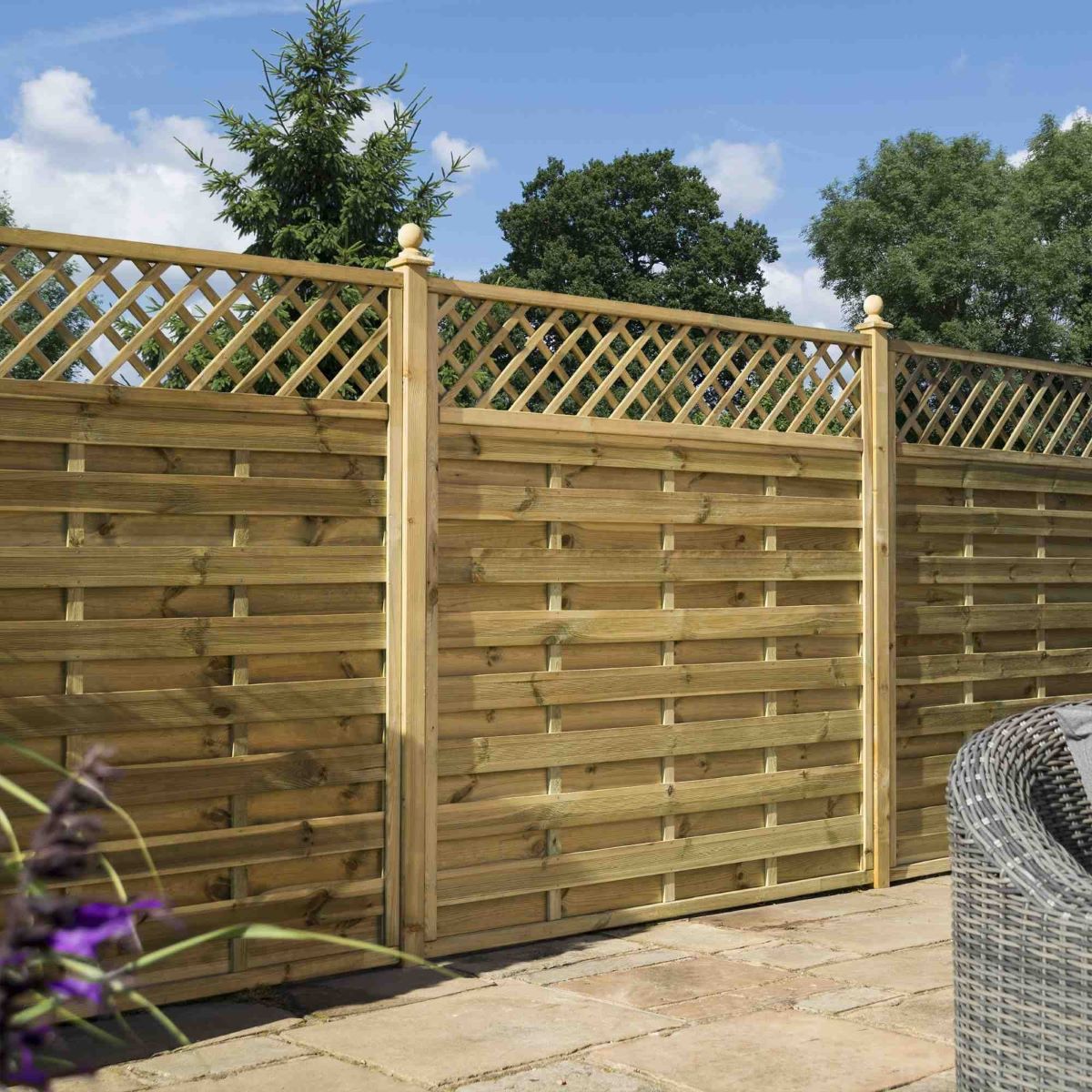
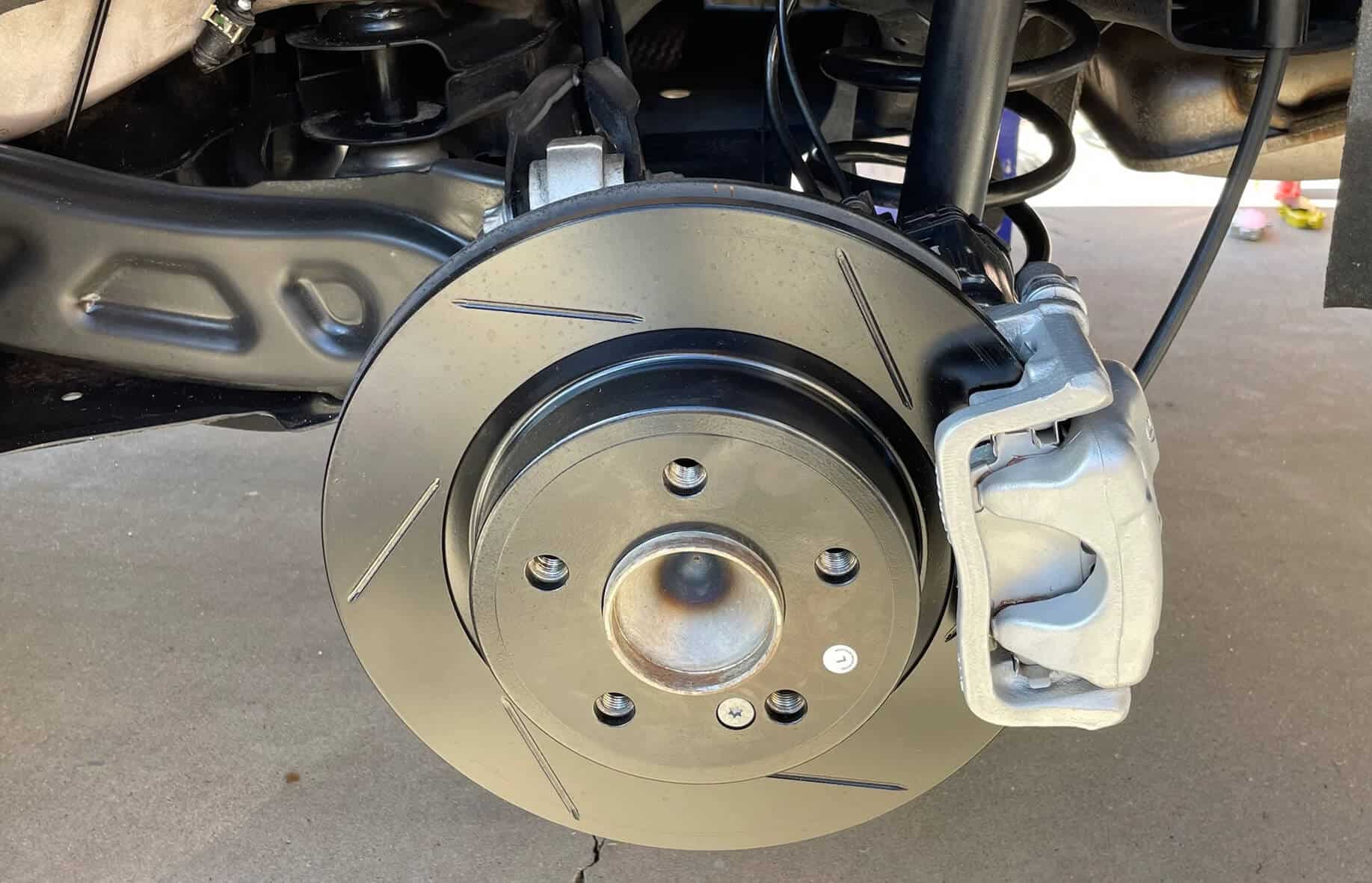
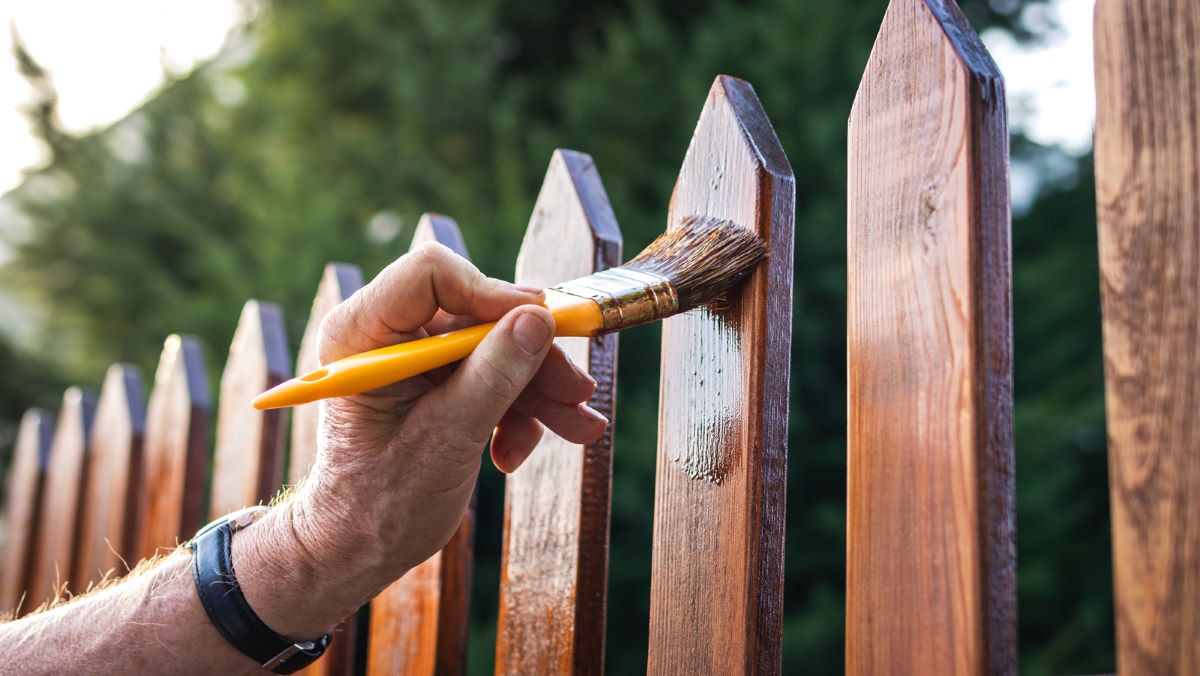

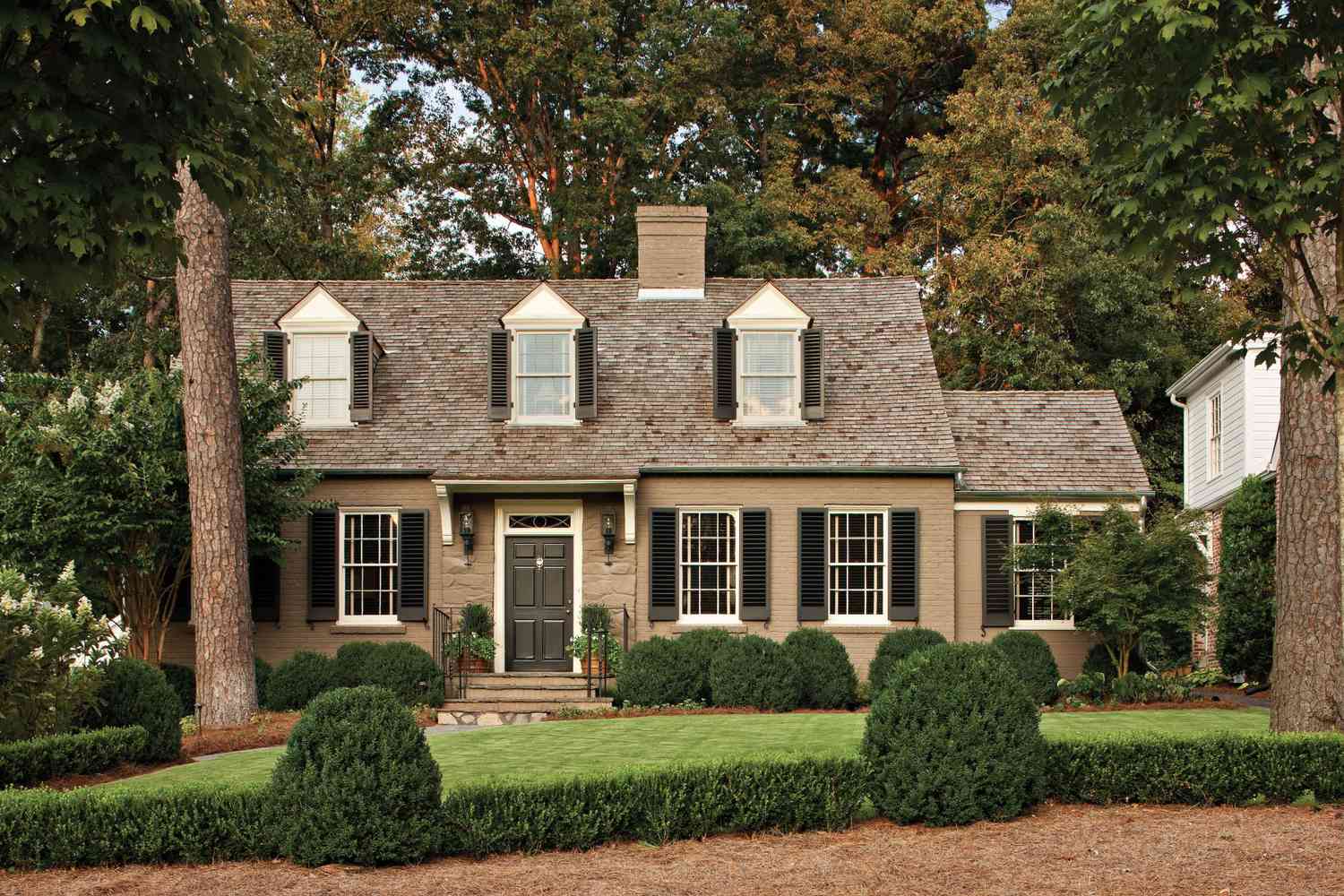

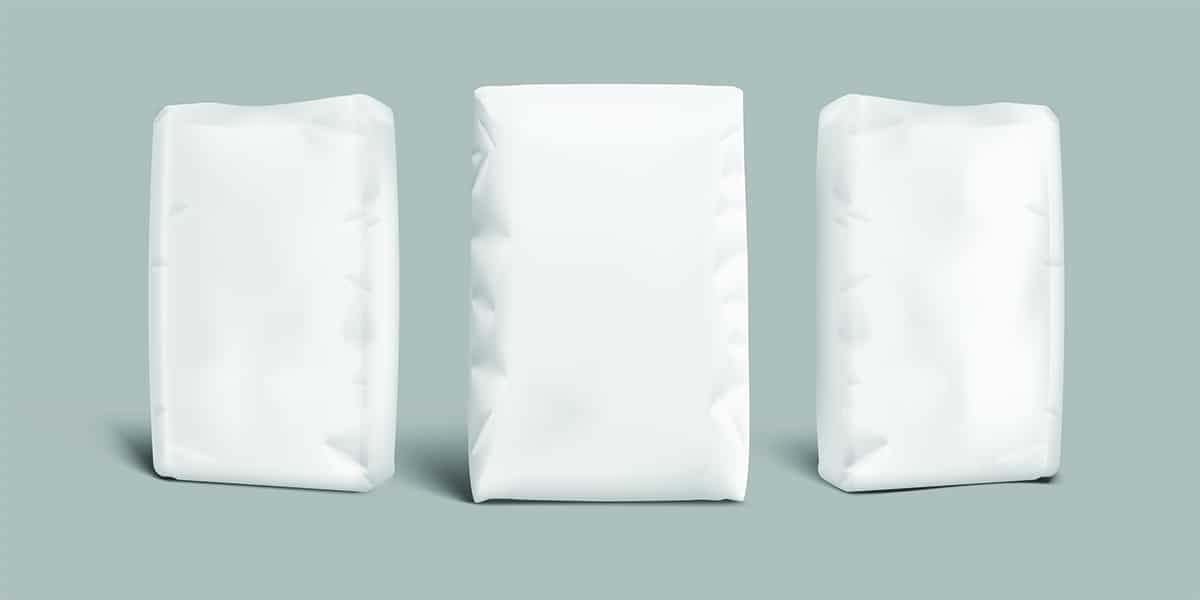

0 thoughts on “How Long Will Cedar Fence Last”